The Chinese ancient armor protecting the head was called Zhou (胄, helmet) in the pre-Qin period. In oracle bone inscriptions, the helmet is painted as a shield with a vertical tube at the top. And many of the bronzes excavated from the Yinxu tomb in Anyang are fully consistent with this phenomenon. However, there is a lack of a standard for the definition of other ancient helmets without vertical tubes in Western Zhou and Spring and Autumn Warring States.
Therefore, the emergence of iron head armor as the dividing line, before that, regardless of whether they had vertical tubes or not, they were called Zhou regardless of whether the material specifically leather or bronze, after that, they were divided into two categories: Dou Mou (兜鍪, helmet) and Kui (盔, helmet). But those with vertical tubes with feathers as decoration were still called Zhou, such as the unified style of the Qing Dynasty.
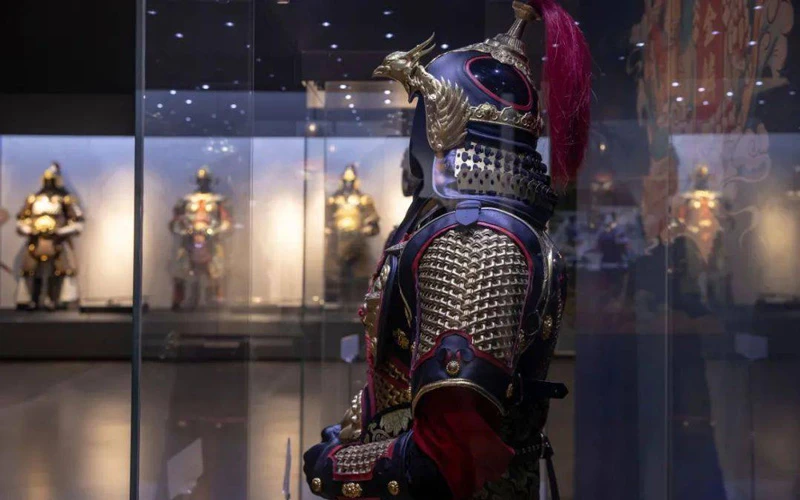
Ancient helmets from the pre-Qin period
Bronze Zhou (胄) of the pre-Qin period is bounded by the Shang and Zhou (周) dynasties. The surface of Zhou in the Shang Dynasty is generally cast with Taotie, round sunflowers, and other patterns, and the unearthed objects in Xingan County, Jiangxi are especially the most exquisite.
The bronze Zhou of Western Zhou (西周), Spring and Autumn, and Warring States were basically plain, and the top of Zhou no longer had vertical tubes, but was mostly replaced by ring buttons and stripes. Only a few of the Zhou were decorated with hemispherical bulges along the mouth, but the sides extended downward to protect the cheeks, setting a precedent for later innovations in the shape of the ancient helmets.
The leather Zhou of the pre-Qin period are only available in two examples from the Warring States tomb complexes in Suixian and Jiu Lian Dun in Hubei Province, and are made up of various shapes of armor pieces. The Zhou armor extended downwards the cheeks and the back of the neck. Wearing the leather Zhou, only the front of the face can be exposed. There is larger protective area than the bronze Zhou in the Shang and Zhou period.
A composite Zhou with leather for the body of the cap and the top, forehead, both sides of the nail embellished with bronze ornaments appeared in the late Shang and early Zhou Dynasty. Several pieces of physical objects were unearthed in the Shang and Zhou tomb in Tengzhou, Shandong. From the protective strength point of view, this new kind of Zhou is better than the Zhou cast purely with bronze. From this association, there must have been such a phenomenon in the manufacture of armor, but so far no physical evidence has been found.
Dou Mou in the Warring States, Qin and Han Periods
The word Dou Mou (兜鍪) originates from the record of "The Book of Later Han - Yuan Shao Biography". Dou refers to something like a pocket, and Mou is an ancient cooking utensil, probably the early iron head armor, such as the physical objects unearthed in Yanxiadu, Yi County, Hebei, is indeed similar to the pocket-shaped cooking utensils, so the name is given.
The Dou Mou excavated in Yanxiadu, consisting of 87 pieces of iron armor, the top of which is a round flat top made of two semi-circular thick armor pieces, and two pieces of shaped jaw guard armor with curved corners extending in opposite directions at the lower jaw of the mouth.
The edge of the armor of Dou Mou with fine perforations, which should be used for sewing the needle eye of the lined leather or woven material wrapping the edge. From the restored object, it can be seen that Dou Mou could fit the head and face more closely.
In 1995, another Dou Mou in basically the same shape was unearthed in the same area. This one has a slightly larger size and is made up of 69 pieces of iron armor. These two Dou Mou both belong to the late Warring States period, but the biggest difference between them is that the second one is equipped with an eyebrow-visor plate on the forehead, and the armor piece covers the whole face, only revealing three slits for the eyes, nose, and mouth, which is very similar to the helmet of a European medieval warrior.
Ancient China cavalry first appeared in the late Warring States. The cavalry of the vassal states gradually developed under the impetus of King Wu Ling of Zhao's change of costume to Hu riding and shooting army, but the stirrup had not yet been invented at that time, and the difficulties of horse combat restricted the development of cavalry. Wear heavy armor and ride on a horse without stirrups, holding spears and halberds with a single hand, defeating the opponent at the moment when the war horses encounter. So the upper body, and head protection is particularly tight, otherwise leading cavalry to a disadvantageous situation.
The shape of Dou Mou in the Warring States continued to be in use until the Qin and Han dynasties. The stone Dou Mou unearthed from the burial pit of Qin Shihuang's tomb is almost identical to the first one unearthed in Yanxiadu, with only a row of hanging edges added to the lower edge of the whole to strengthen the protection of the neck. A Western Han Dou Mou excavated from the tomb of the King of Chu in Xuzhou. The dangling edge was increased by two rows, and the whole was raised so that the whole top was no longer close to the top of the head, which made the Dou Mou more resistant to smashing and cutting and strengthened the protection of the top of the head.
A Dou Mou unearthed in the northern suburbs of Xi'an is made up of oval-shaped armor pieces, and the back of the Mou has a draped collar armor, the length of which exceeds that of the cheek armor on both sides and is separated from it, a form that pioneered the structure of the Dunxiang (顿项, a part which protects the face and head and is connected with the helmet) in later times.
Zhou after Wei and Jin
Zhou of the Wei, Jin, and North and South Dynasties, in Hebei, Liaoning and other places of the Northern Dynasties, the Sixteen Kingdoms tombs have physical excavation. As for the body of Zhou, some are with four large armor piece examples together, some are still the whole body with small armor piece embellishments. But all of them had the draping Dunxiang of Western Han kind. And they were equipped with decorative feathers and vertical tubes.
There is only one Zhou body is with long stripes which were common in the Eastern Han. The following of it is draped with four rows of small armor pieces composed of Dunxiang, but no helmet top and the behind is separated. This topless Zhou should cover the outside of the cap, or be embellished outside the leather cap body. But it can be seen from a Northern Dynasty figurine head that it was more likely to bind outside the cap. One such topless Zhou was also found in the tomb of the King of Qi in the Western Han Dynasty, and seems to have belonged to a high-ranking general.
In the Spring and Autumn and Warring States period, the iron and bronze Zhou were used in the Northern and Southern Dynasties, Liao and Western Xia dynasties, and there were no major changes in the basic structure. We can see a lot of Zhou in Ming and Qing dynasties, and the decoration of the vertical tubes on the top of the helmet is very eye-catching. The top of the Zhou of the Ming dynasty were sometimes decorated with feathers while also inserting small flags, this decoration was called Ying (英) and it was a recognition of the merits of military officials.
Definition and types of Kui
Kui (盔) is a modern term. A copper helmet with a brim was unearthed from a Southern Song Dynasty tomb in Shandong, so later it is customary to call Zhou with brim collectively as Kui. And in turn, the Dou Mou and Zhou after the Sui and Tang dynasties are mixed as Kui, for example, the phoenix wing Kui was the most popular Kui in the Song Dynasty, and there was no helmet brim on it. Therefore, the head armors after the Sui and Tang dynasties, in addition to the ones with obvious characteristics of Zhou, are included in the category of Kui, especially those with brim.
The Kui of the Tang Dynasty was unearthed in Ning'an, Heilongjiang Province, and the body of the Kui was riveted with twelve iron pieces, with iron balls on the top of the helmet, and there should be dangling Dunxiang on the rear of both sides of the helmet. This kind of Kui of the Tang dynasty can often be seen in some other cultural relics, indicating that this Kui is common in a long period of time.
Most of the Kui of the Yuan, Ming, and Qing dynasties had helmet brims or eyebrow shelters, and the shapes were similar. At the end of the Tang Dynasty and the Five Dynasties, the top of Kui began to be popular with carved decoration, and also popular in the Song, Yuan, and Ming dynasties. At the same time, the structure of the Dunxiang from the Tang Dynasty began to change, some reflex up and then folded down, some sides diagonally to the outward roll.
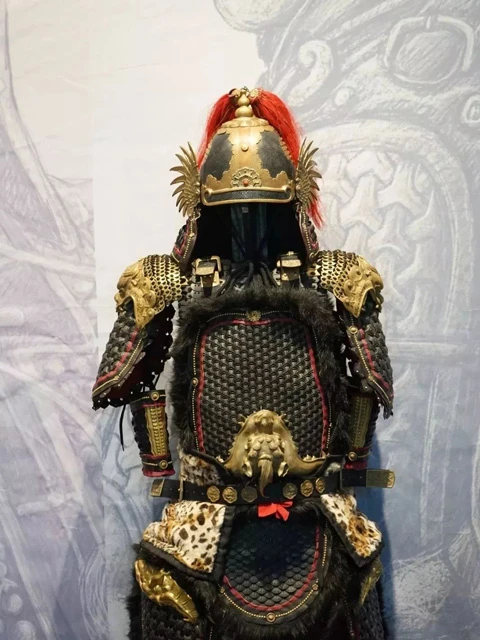
The rolled-up Dunxiang eventually evolved into a decorative piece along the mouth of the Kui. After the Northern Song Dynasty, the Dunxiang reverted to their original shape and became larger and larger, some covering the entire shoulder and extending to the back.
The uneven surface of the oversized Dunxiang rubbed against each other, affecting the flexibility of head rotation, so from the Song Dynasty it became popular for military generals to wear Jian Jin (肩巾), which mainly served as a spacer to reduce the frictional resistance between the Dunxiang and the armor, but later became a costume accessory that also liked to be tied when not wearing armor.
In the Qing Dynasty, the Dunxiang were purely made of cloth and only decorated with bubble nails on the surface, but the area was larger, covering the whole jaw and neck, replacing the shoulder scarf to block the role of dust, but it was more for the decoration than practicality.
Reference: History of Chinese Costume - Deciphering Ancient Chinese Armor: Liu Yonghua
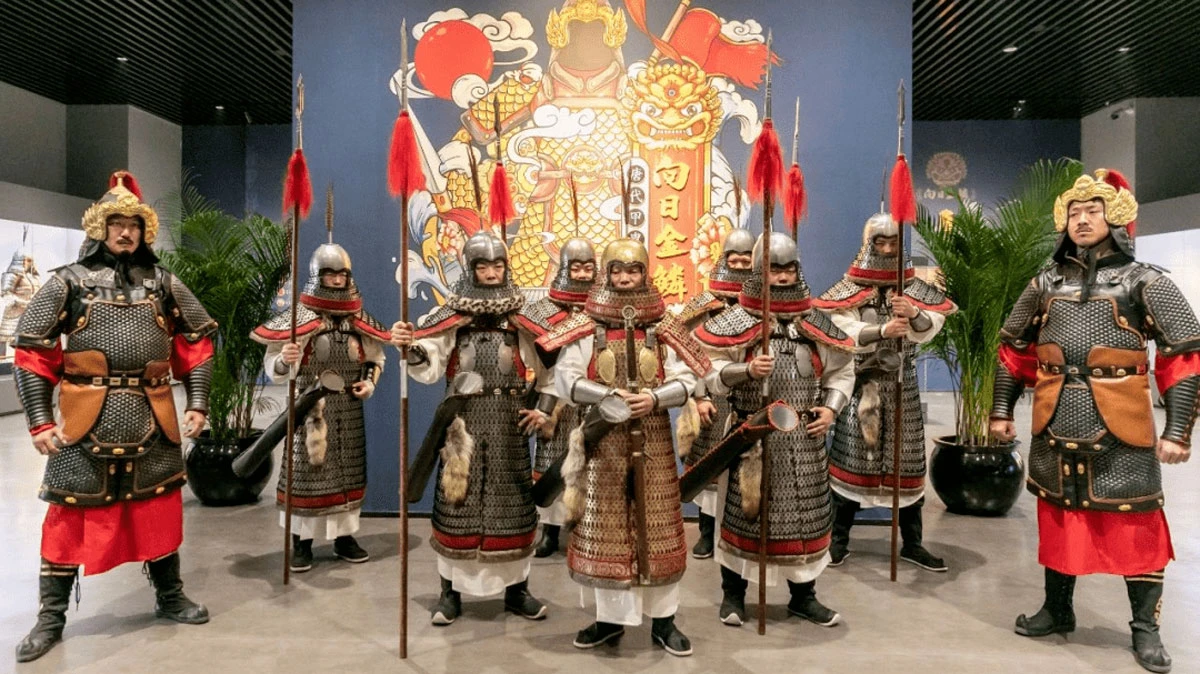
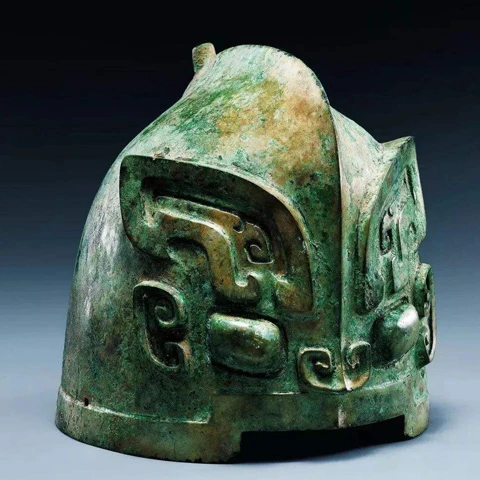

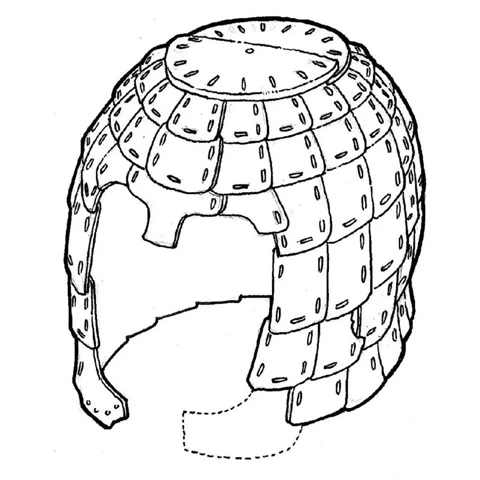
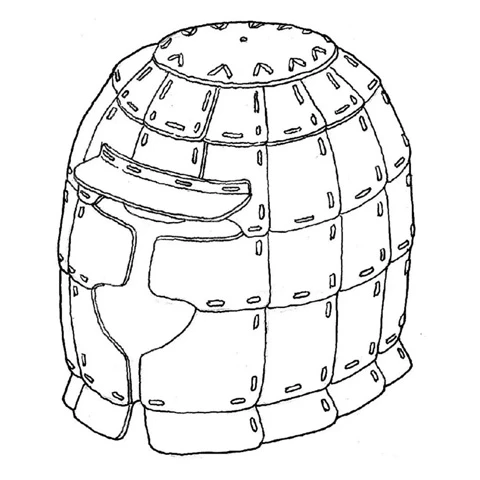
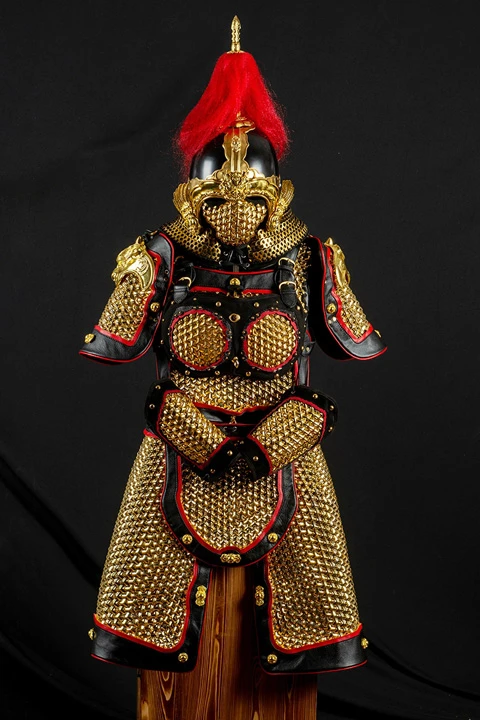
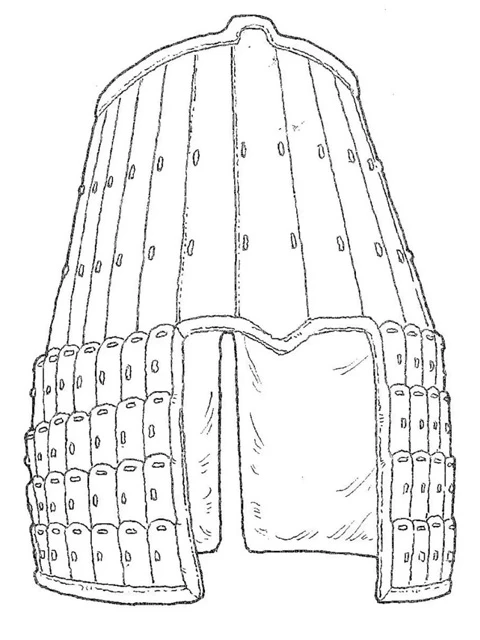
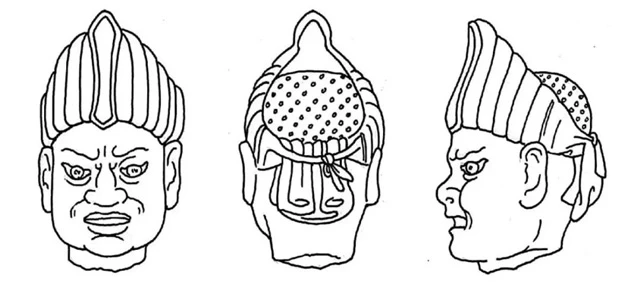
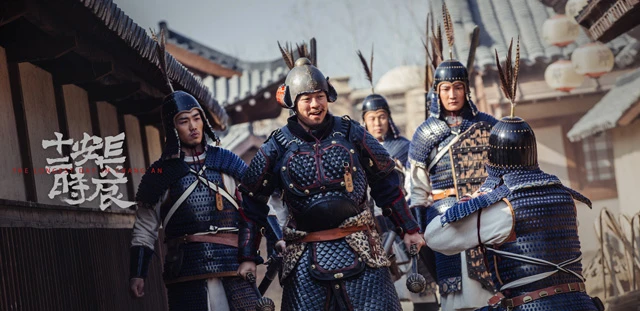
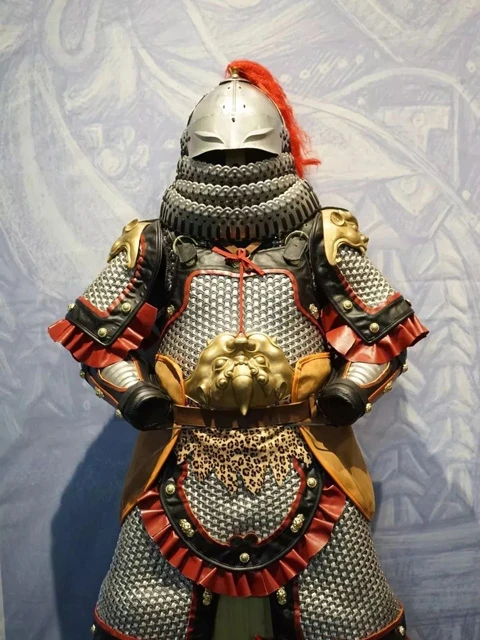
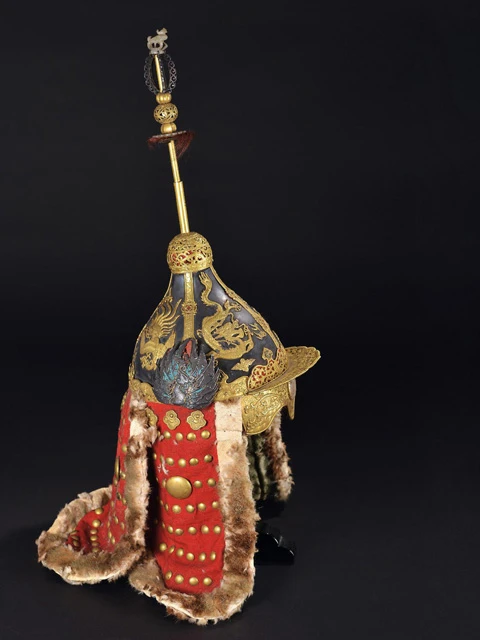

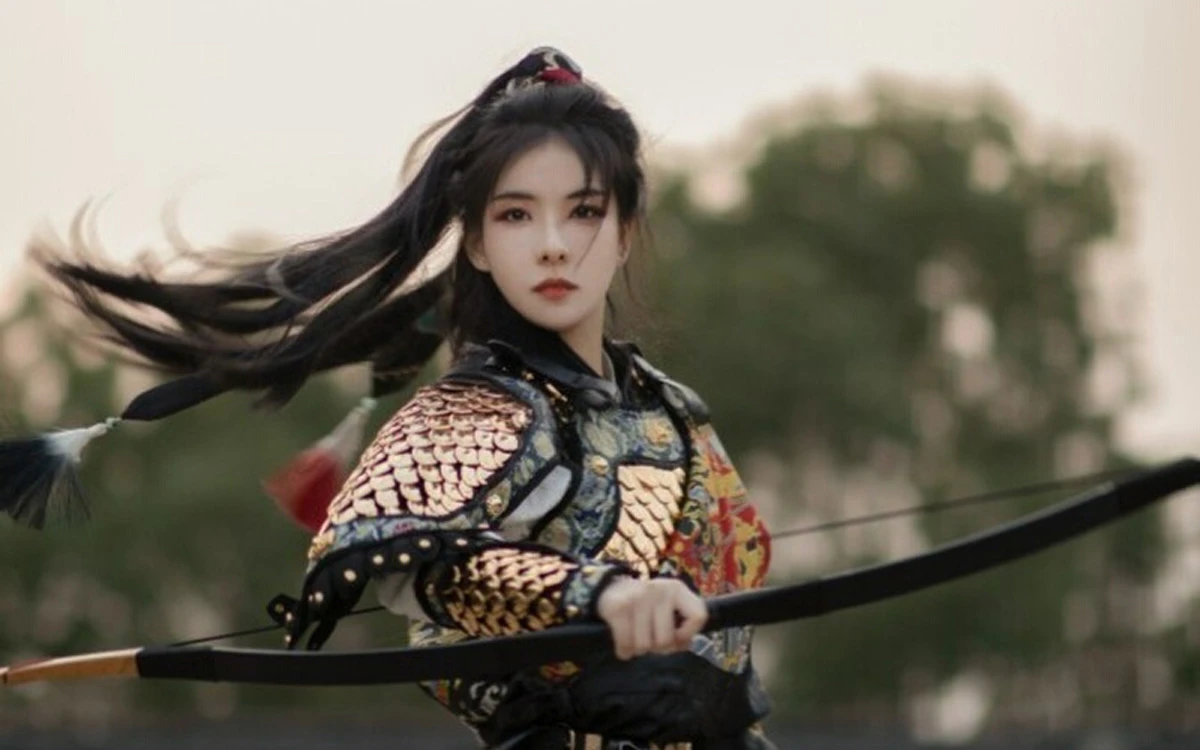
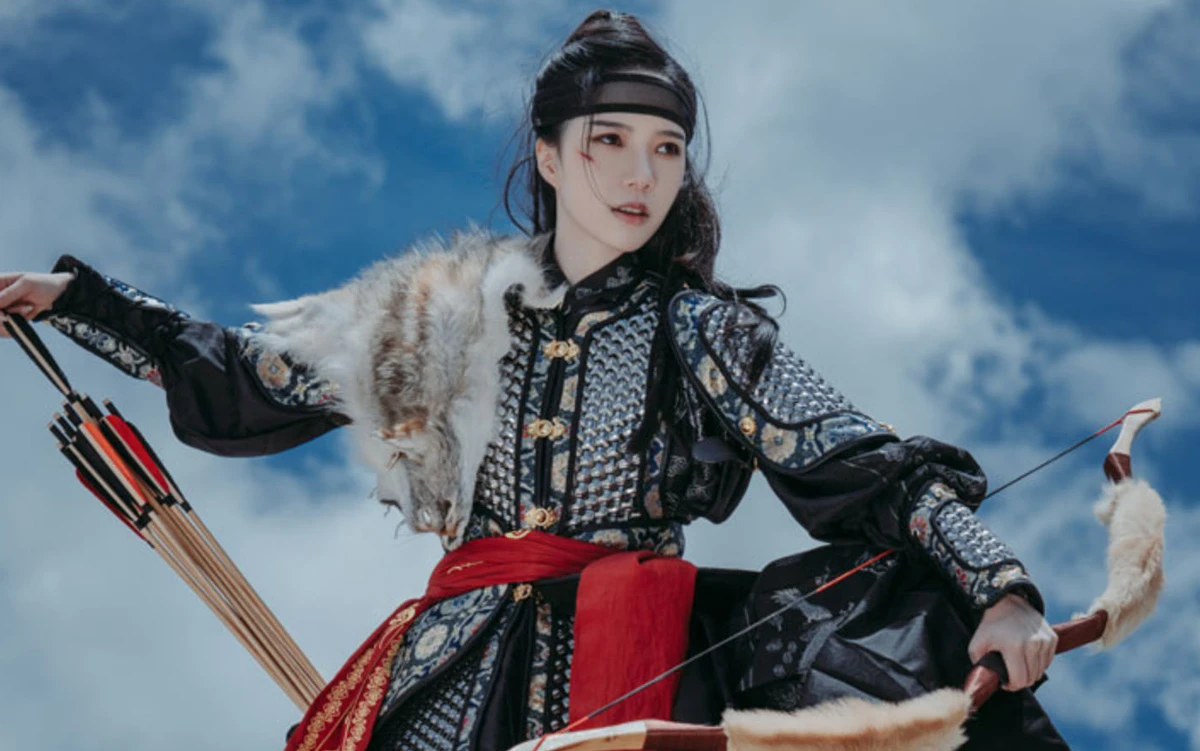
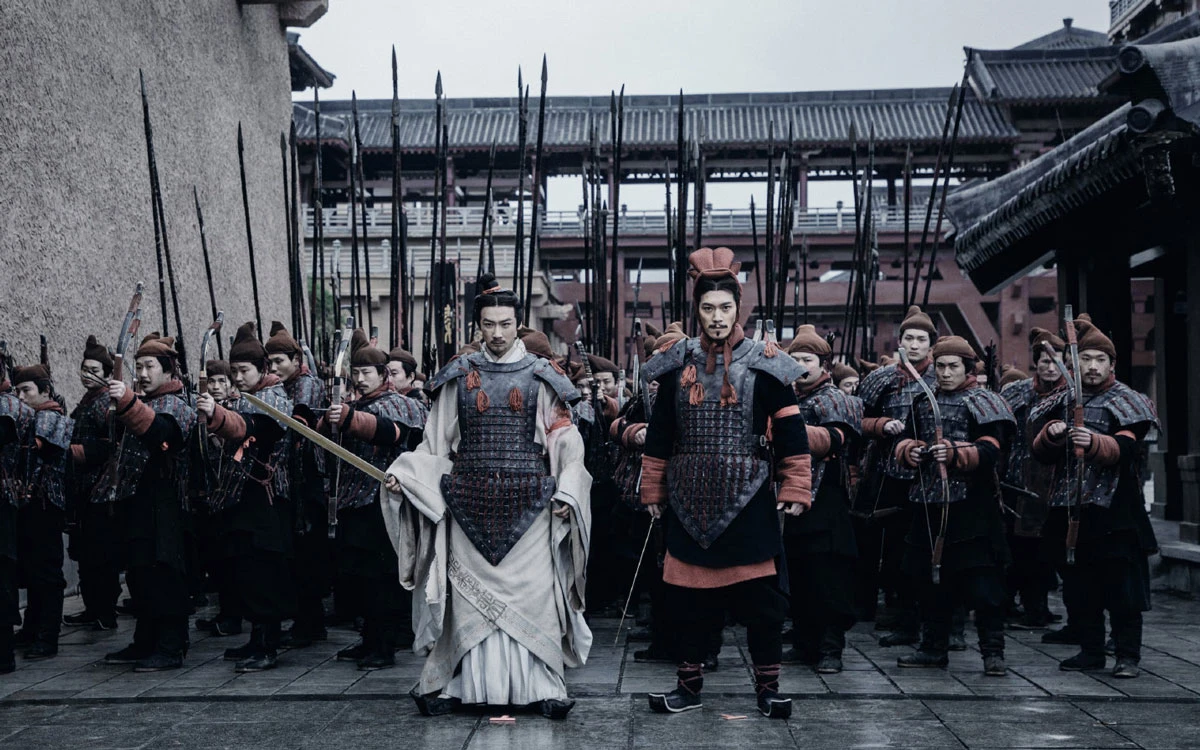

Sangat unik dan bagus
Setiap dinasti berbeda helmnya
Waa😍